The Premier League returned this week after three months of no games being played due to the pandemic. The return saw Chelsea travel to Villa Park to take on Aston Villa. Despite the season nearing a close, both teams still have a lot on the line in terms of their performances. Aston Villa are fighting to stay in the Premier League; before this match, they were 19th in the league, with 26 points. Chelsea, on the other hand, are for a Champions League spot, and before this match, they were in 4th place with 48 points. However, Manchester United (who had a game in hand) were only two points behind Chelsea.
Despite Aston Villa leading at half time, Chelsea were able to turn it around and this tactical analysis will look at how both teams set up tactically and show how Chelsea were able to go back to London with all three points. Despite Chelsea already being in the top four, this win strengthened their position, as they are now five points clear of Manchester United, and even if Manchester City win their appeal to the Court of Arbitration for Sports (CAS) and are able to compete in the Champions League next season, it will be fifth-place Manchester United who will reap the consequences.
Lineups
Dean Smith set up his side in a 4-5-1 formation according to Wyscout, with the hopes that the block of a midfield five would limit Chelsea’s build-up play. Ørjan Nyland was in goal, with a back four of Ezri Konsa, Tyrone Mings, Kortney Hause, and Matt Targett in front of him. In midfield, Douglas Luiz acted as the defensive midfielder, in the middle of the pitch with Conor Hourihane on his right, and John McGinn on his left. Jack Grealish and Anwar El Ghazi acted as the widest midfielders in the bank of five, however, most of the time, they were acting as pure wingers, and Villa’s formation looked more like a 4-3-3. Keinan Davis acted as Aston Villa’s sole striker.
Frank Lampard set up his Chelsea side in a 4-3-3 formation, with a back four of César Azpilicueta, Antonio Rüdiger, Andreas Christensen, and Marcos Alonso in front of Kepa Arrizabalaga. In midfield, Lampard opted for N’Golo Kanté with Ruben Loftus-Cheek on his right and Mateo Kovačić on his left. A front three of Willian, Olivier Giroud, and Mason Mount lead the line.
Villa limit Chelsea at first
Aston Villa were first on the score sheet, with a goal in the 43rd minute from Hause, however, it was their defensive performance that was really impressive in the first half; it seemed that Smith’s tactics to limit Chelsea’s build-up was working well.
Villa were organized in midfield, which forced Chelsea to constantly pass the ball back and forth, trying to find a breakthrough. A lot of Chelsea’s 76% possession in the first half was quite meaningless, as they struggled to penetrate, and have any big chances in the game.
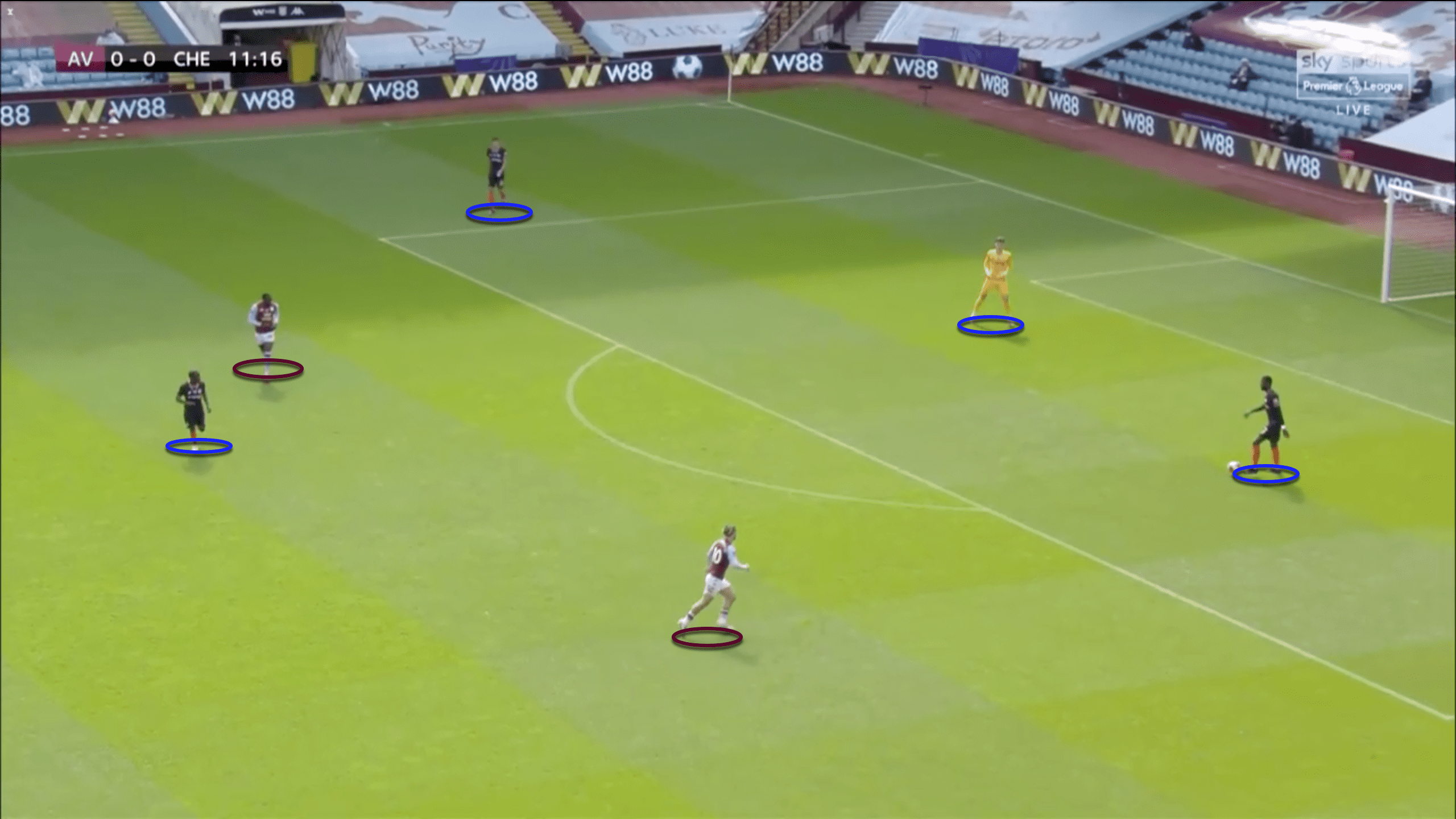
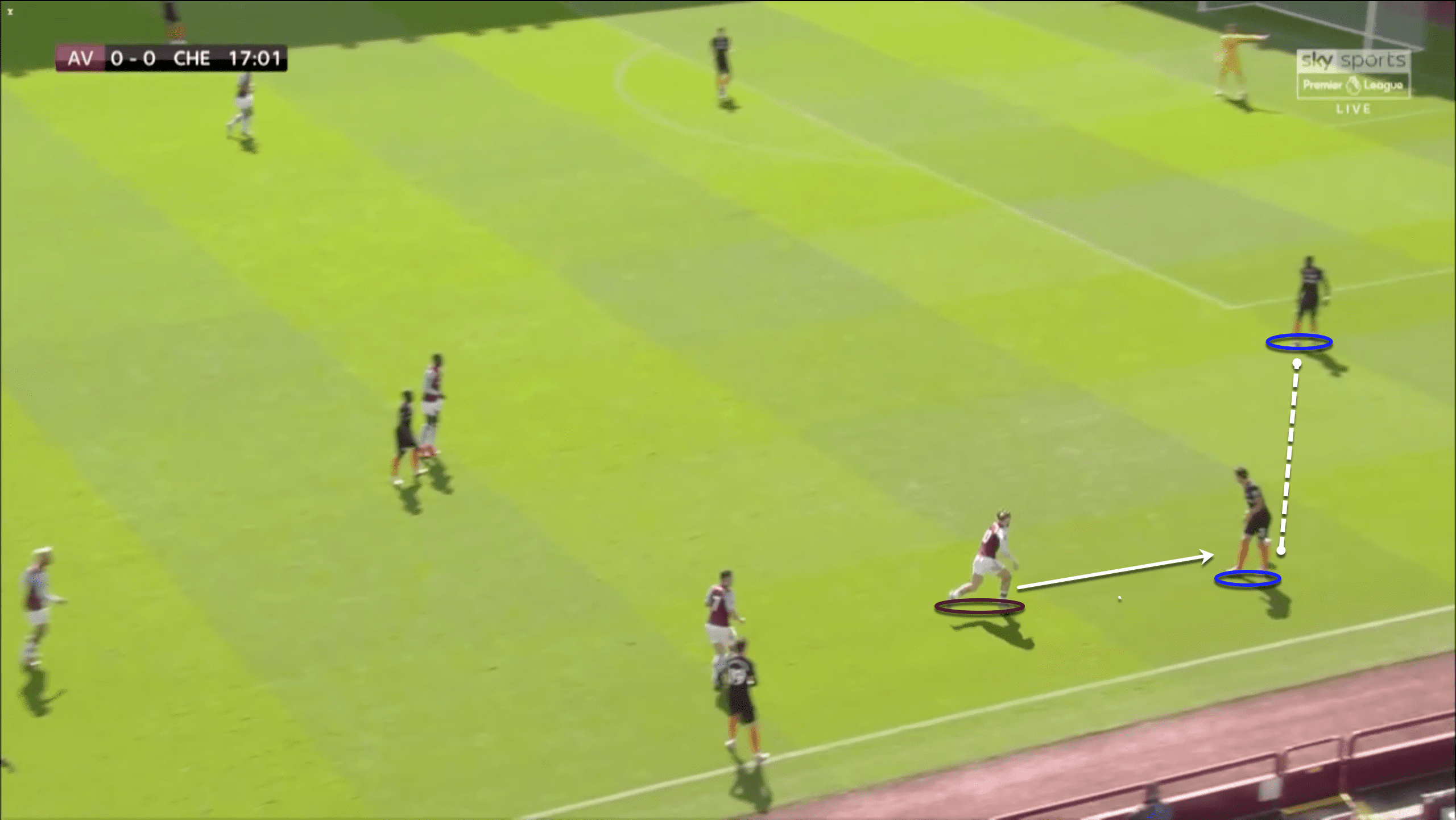
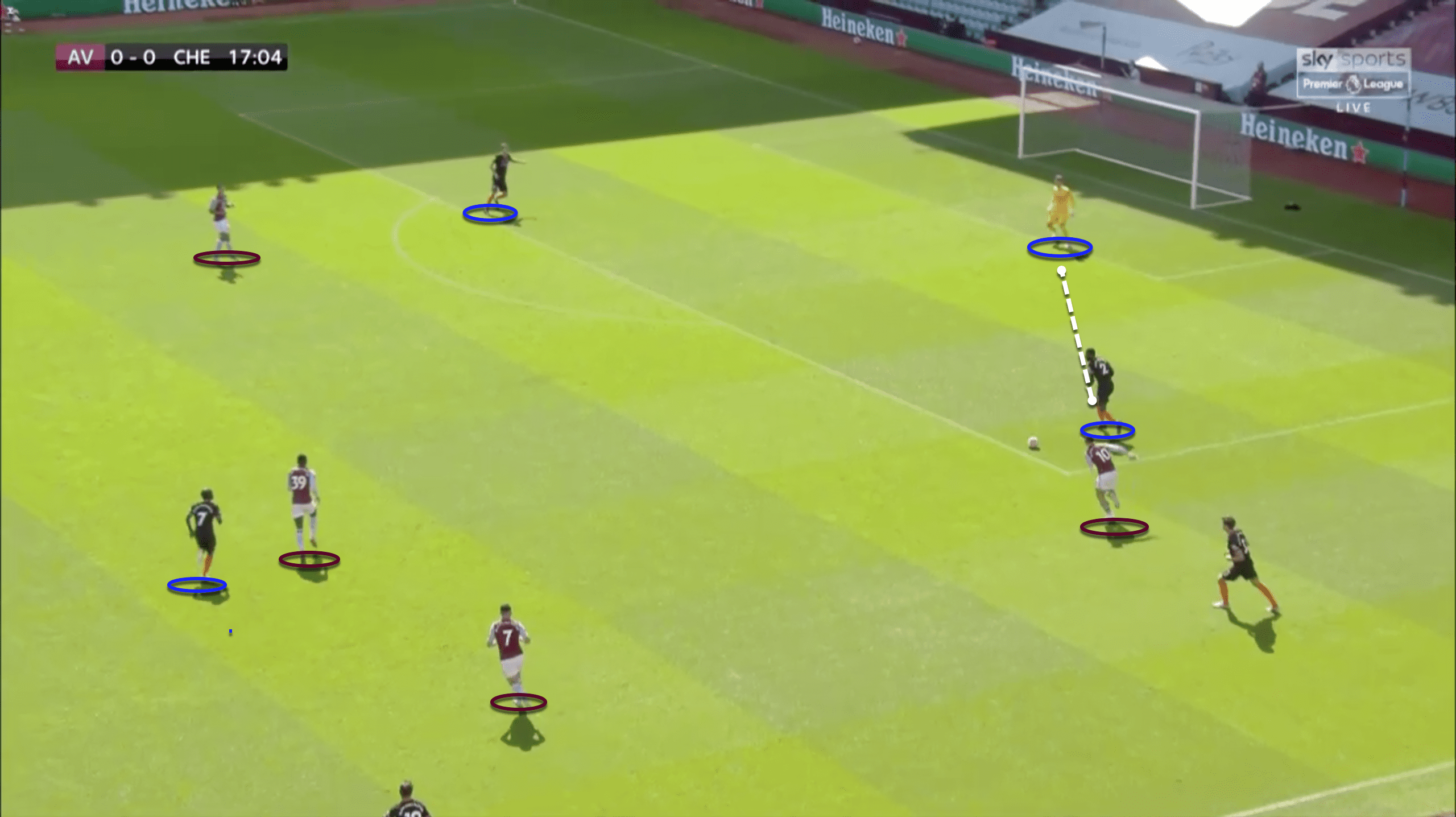
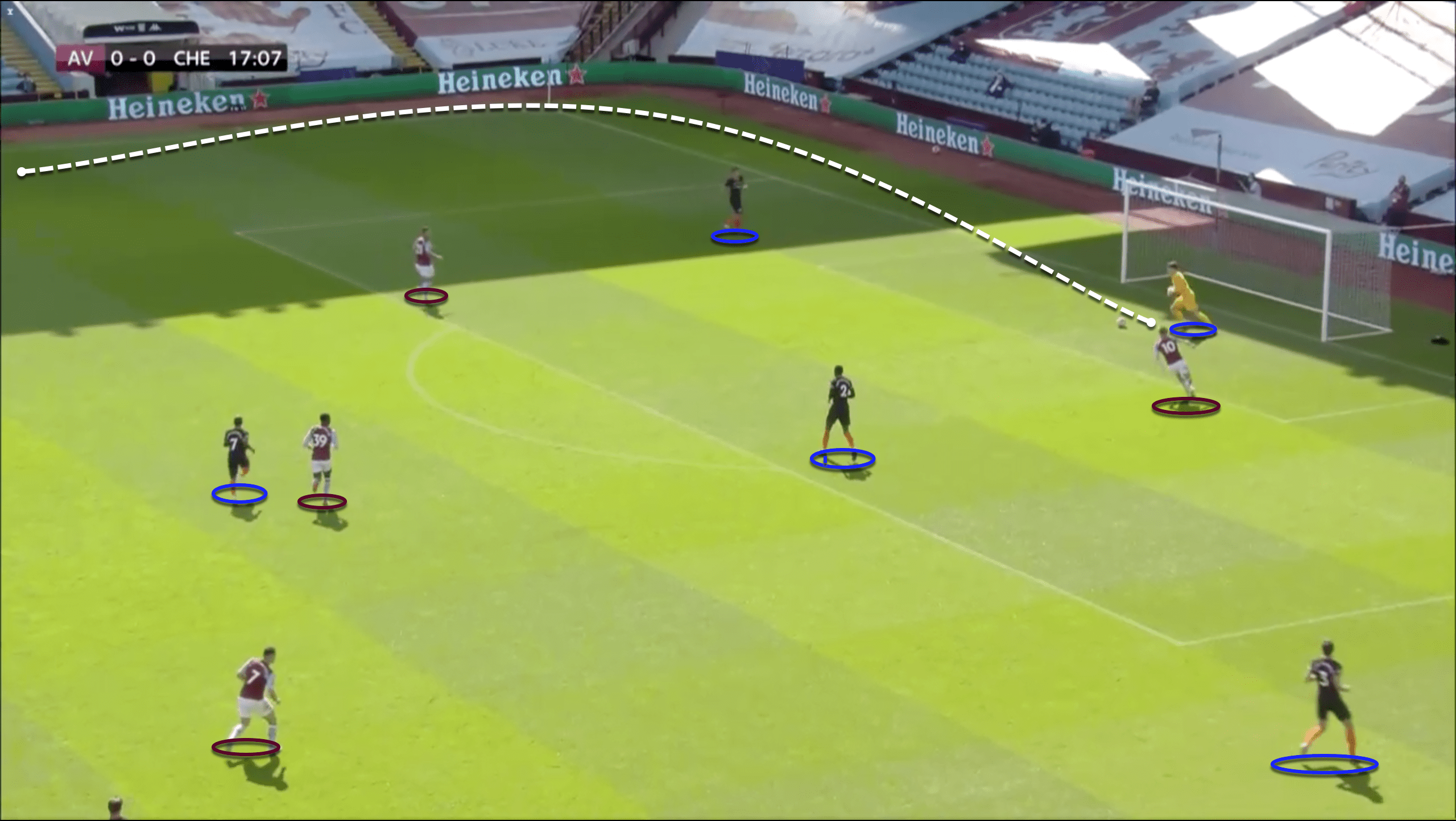
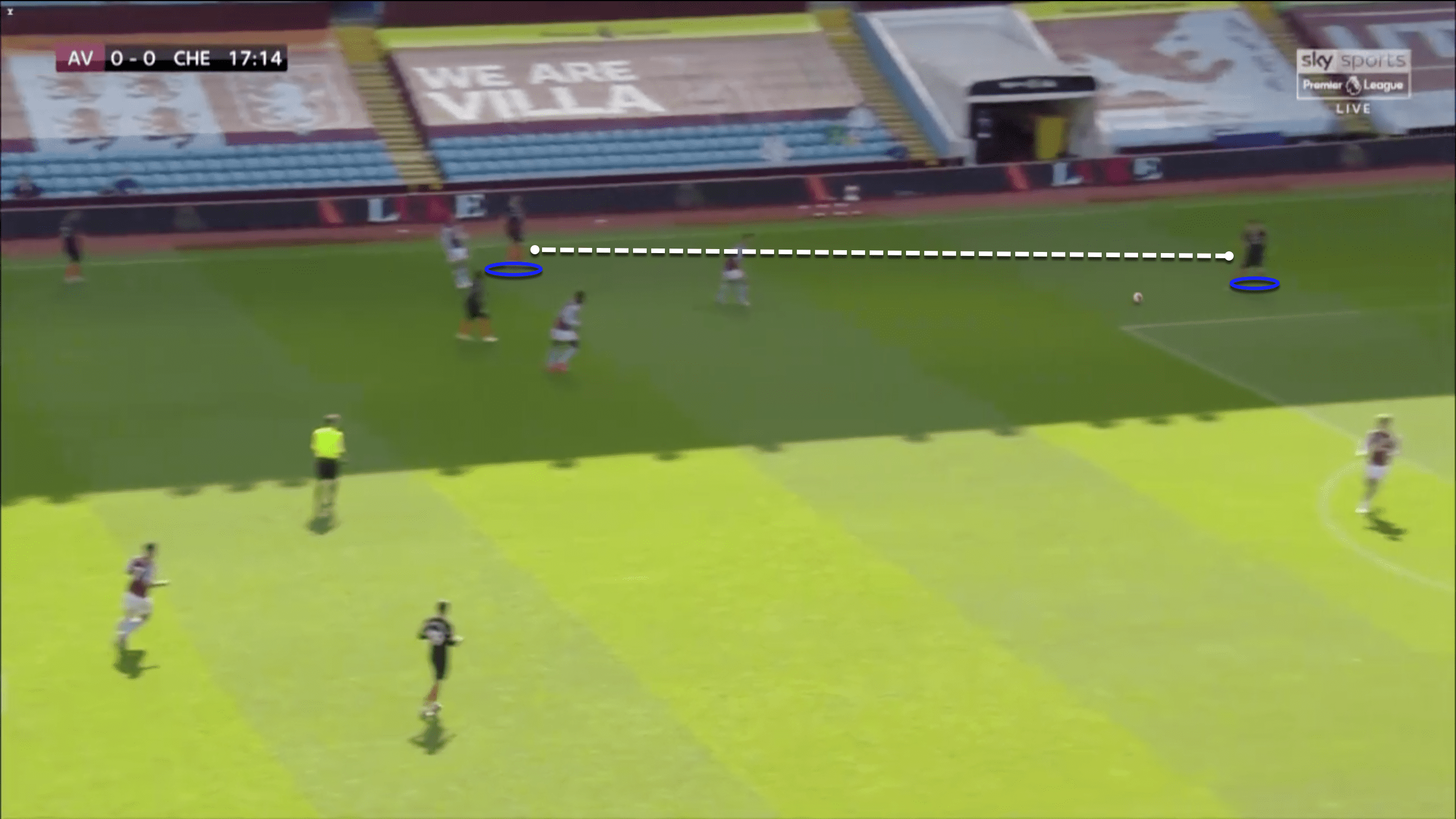
Chelsea saw this as a problem and attempted to get their midfield involved, to try and break through Villa’s press/blocking of the forward passing lanes.
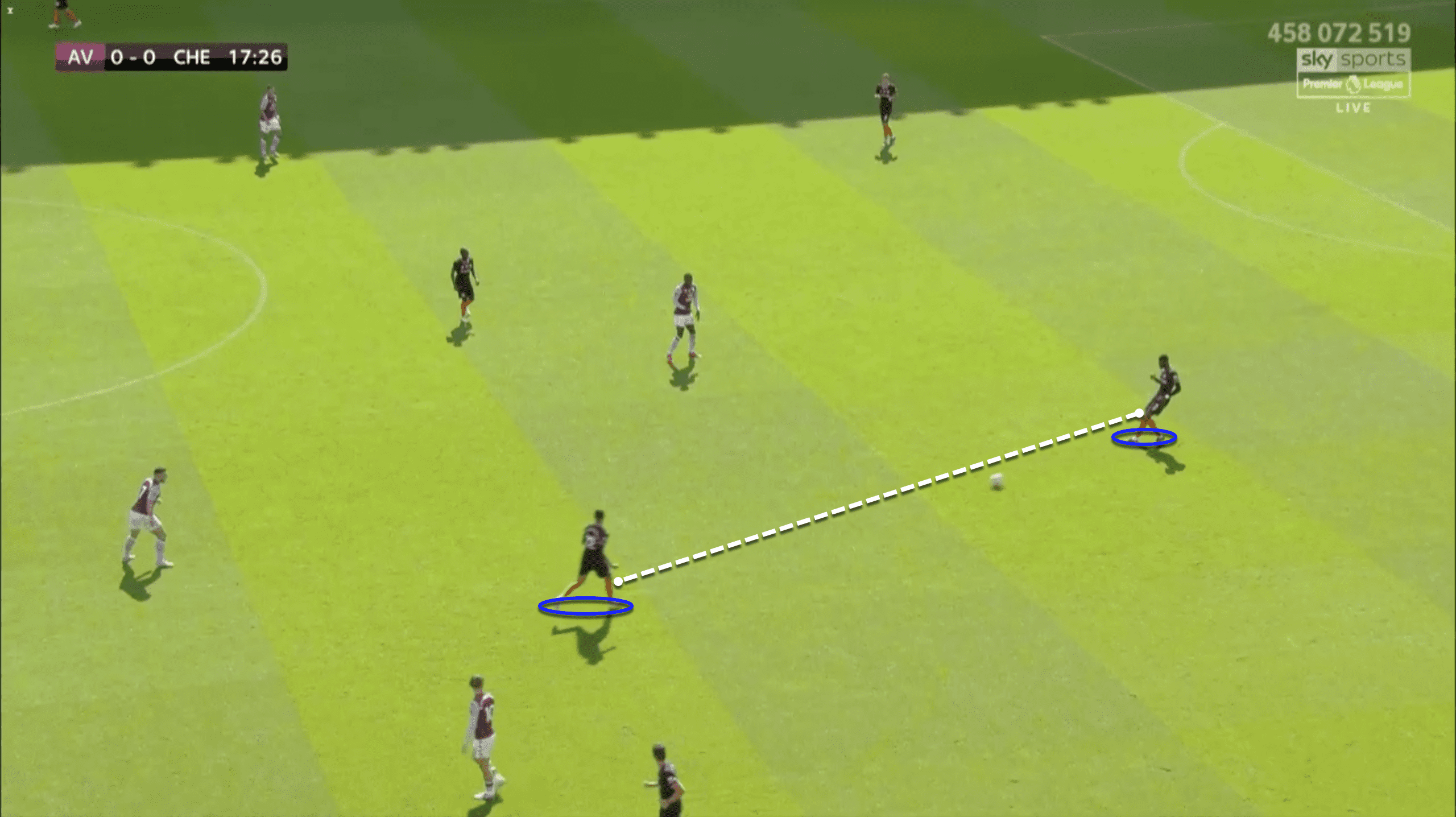
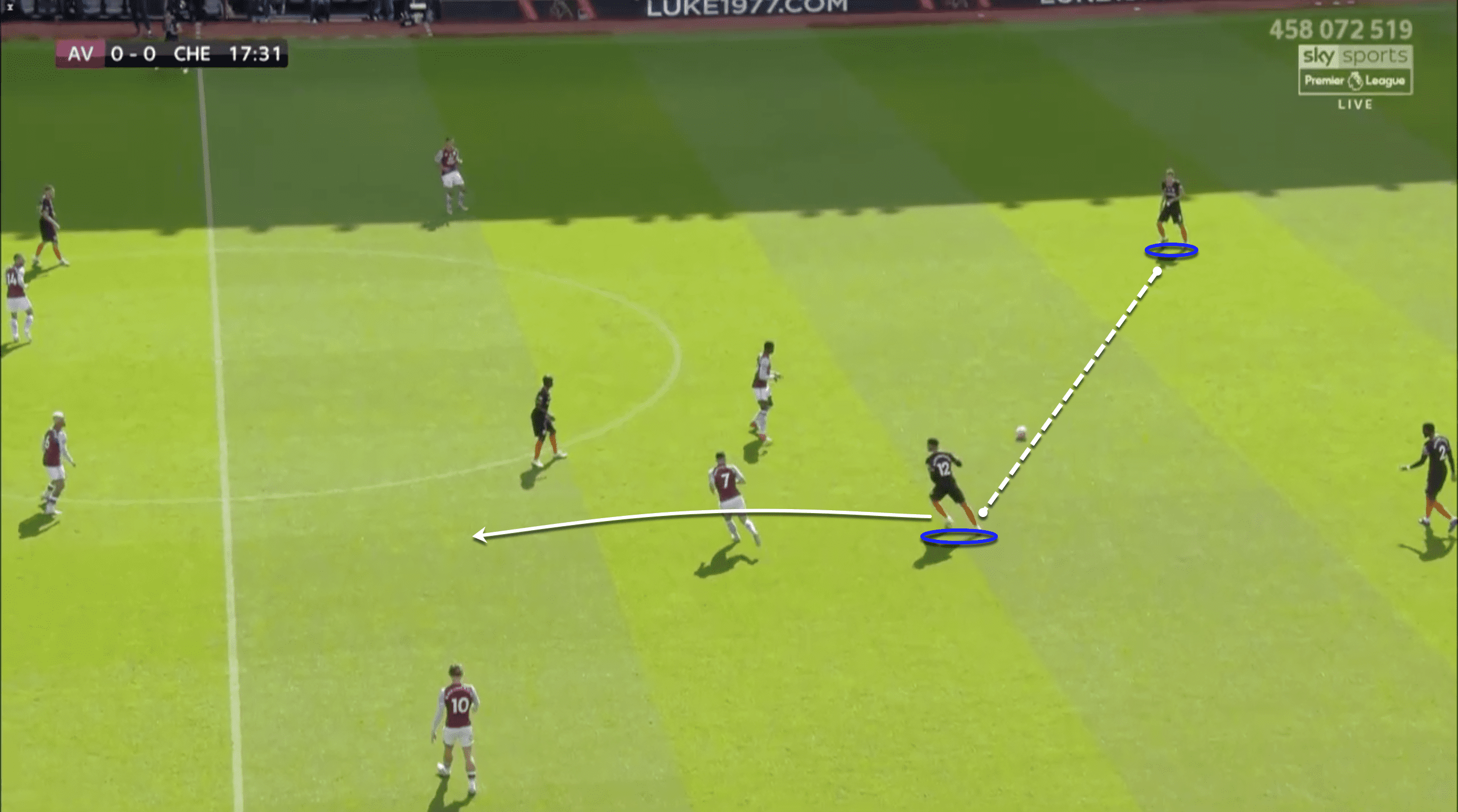
Chelsea’s pass map confirms that their possession was mostly passing between the back four, which can be shown by the thickness of the lines between the four, as well as the dot size confirming that they had the most touches.
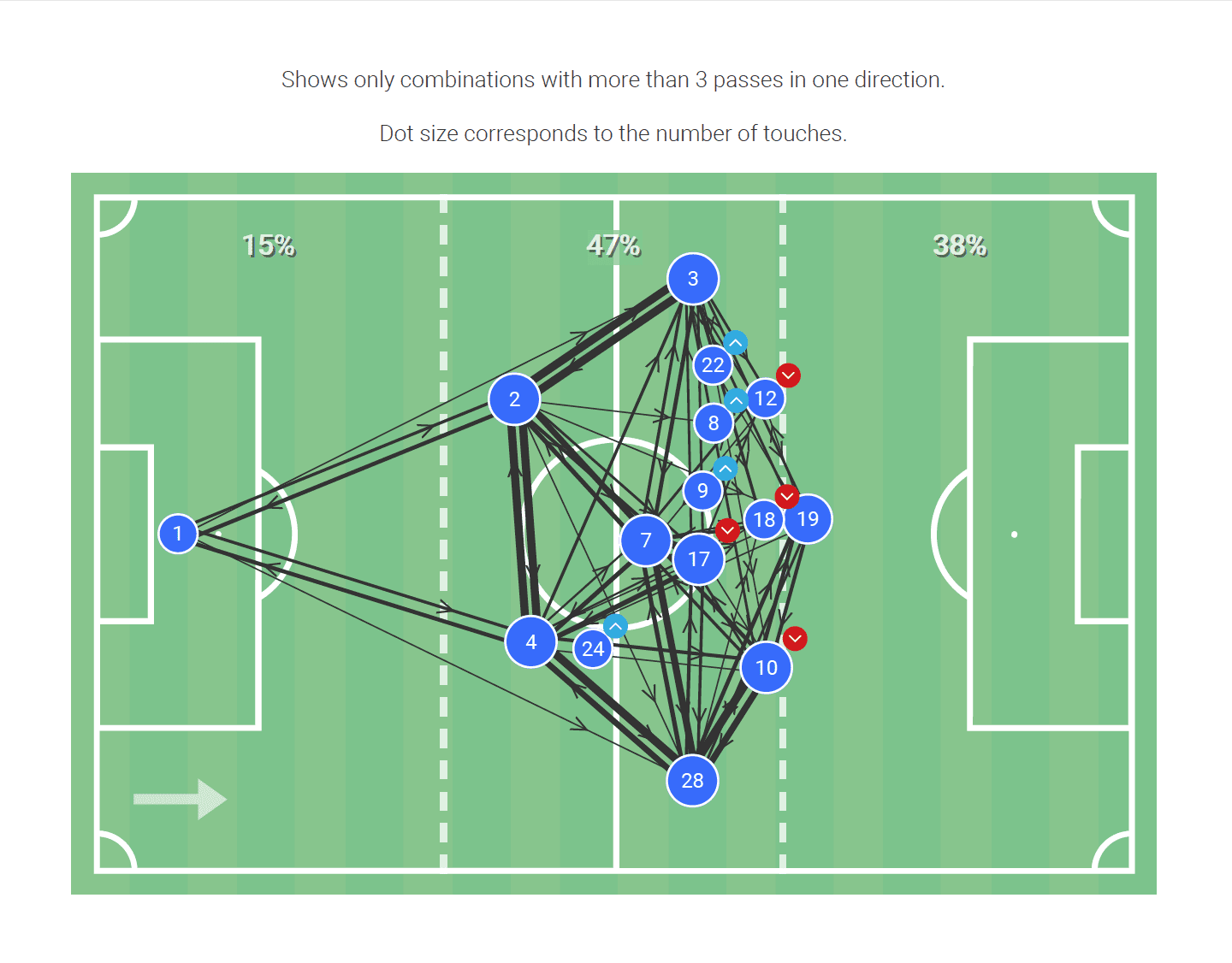
Aston Villa are not usually seen as a pressing side. Most lower league teams are not because of the discipline, fitness levels, and skills it requires to pull off being a full geggenpress team, that is more dangerous without the ball than with it. And while Villa were far from going full-on press against Chelsea, their method of pressing at times, and ensuring passing lanes were blocked, allowed them to frustrate Chelsea in that first half whilst only having 24% of the ball. In that first half, Chelsea’s xG of 0.36 (compared to Villa’s 1.11) showed that they struggled to fluidly build-up and create chances.
Azpilicueta’s positioning and passing
Not only were Lampard’s substitutions crucial for the win, but Azpilicueta, who was involved in both goals, also made a big impact. Chelsea were most dangerous from the right side because of him, and what he brought offensively.
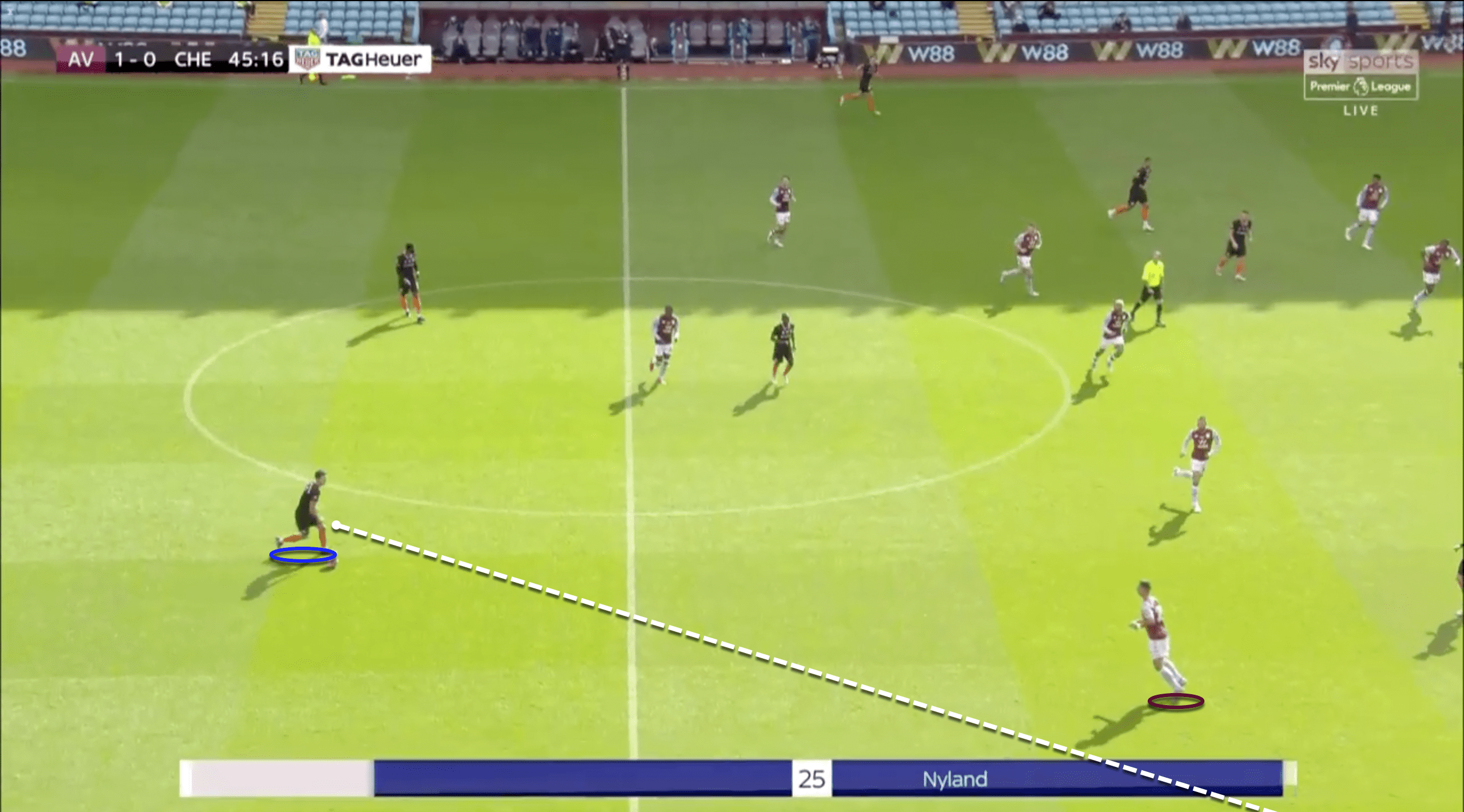
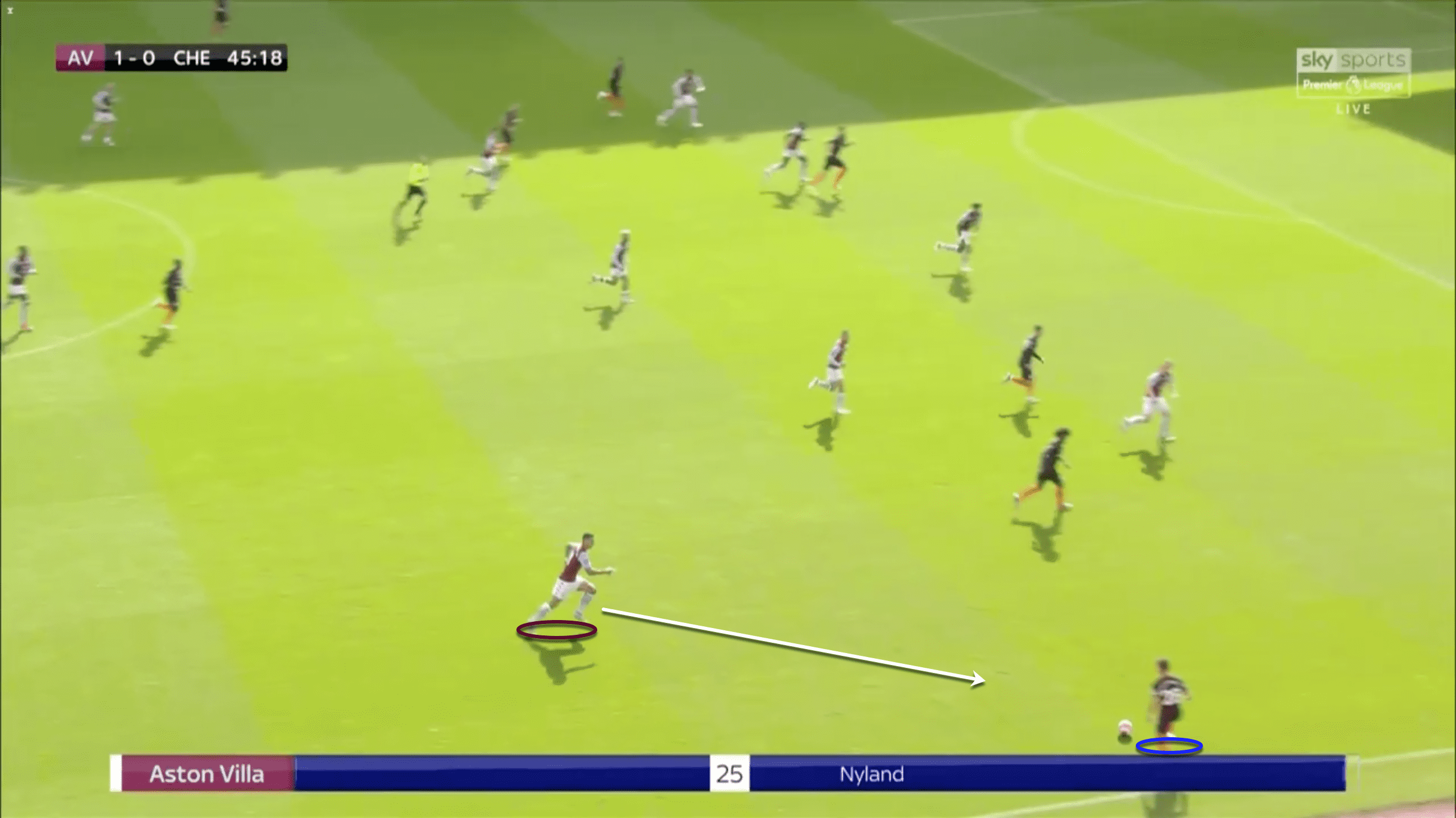
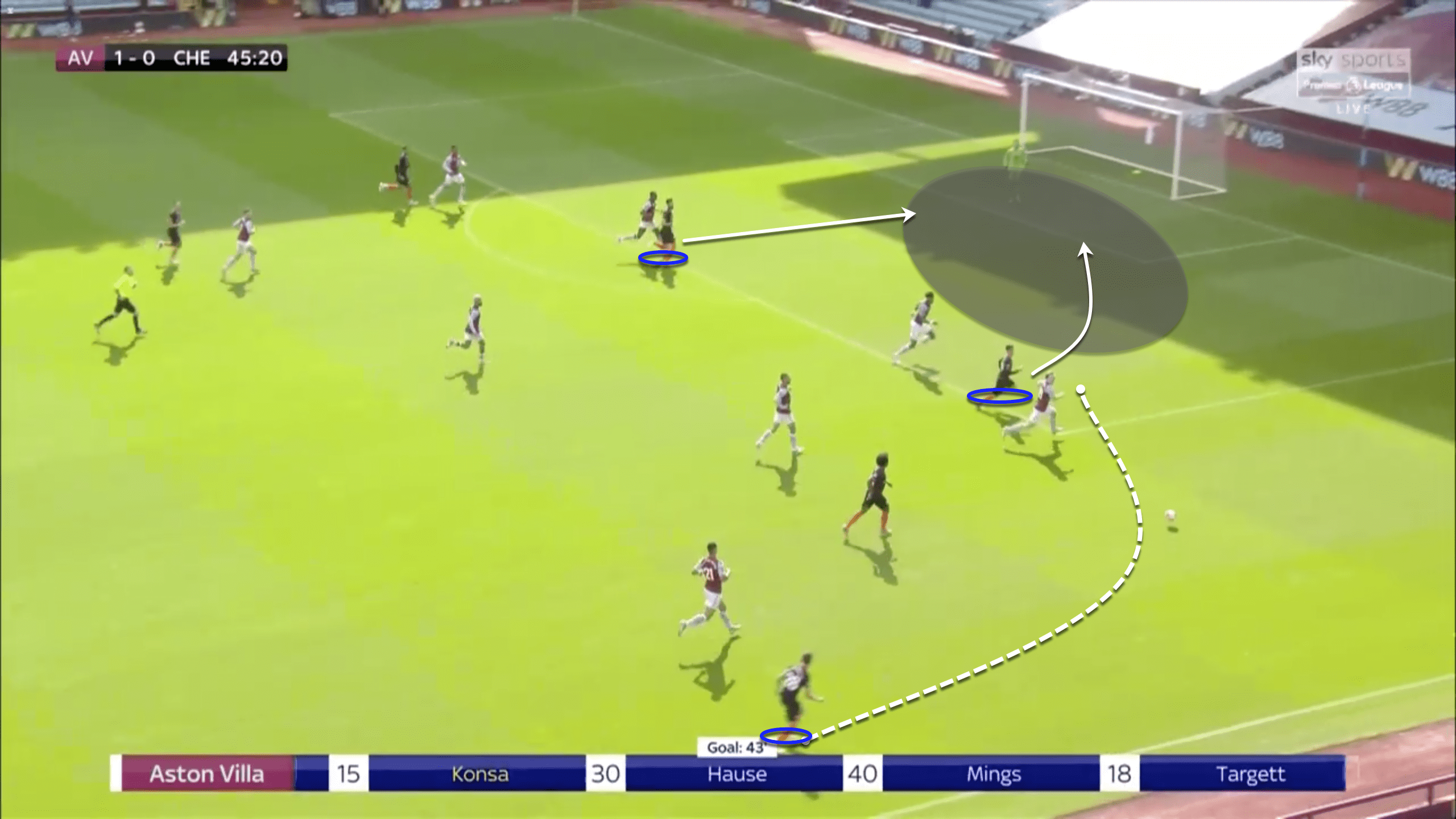
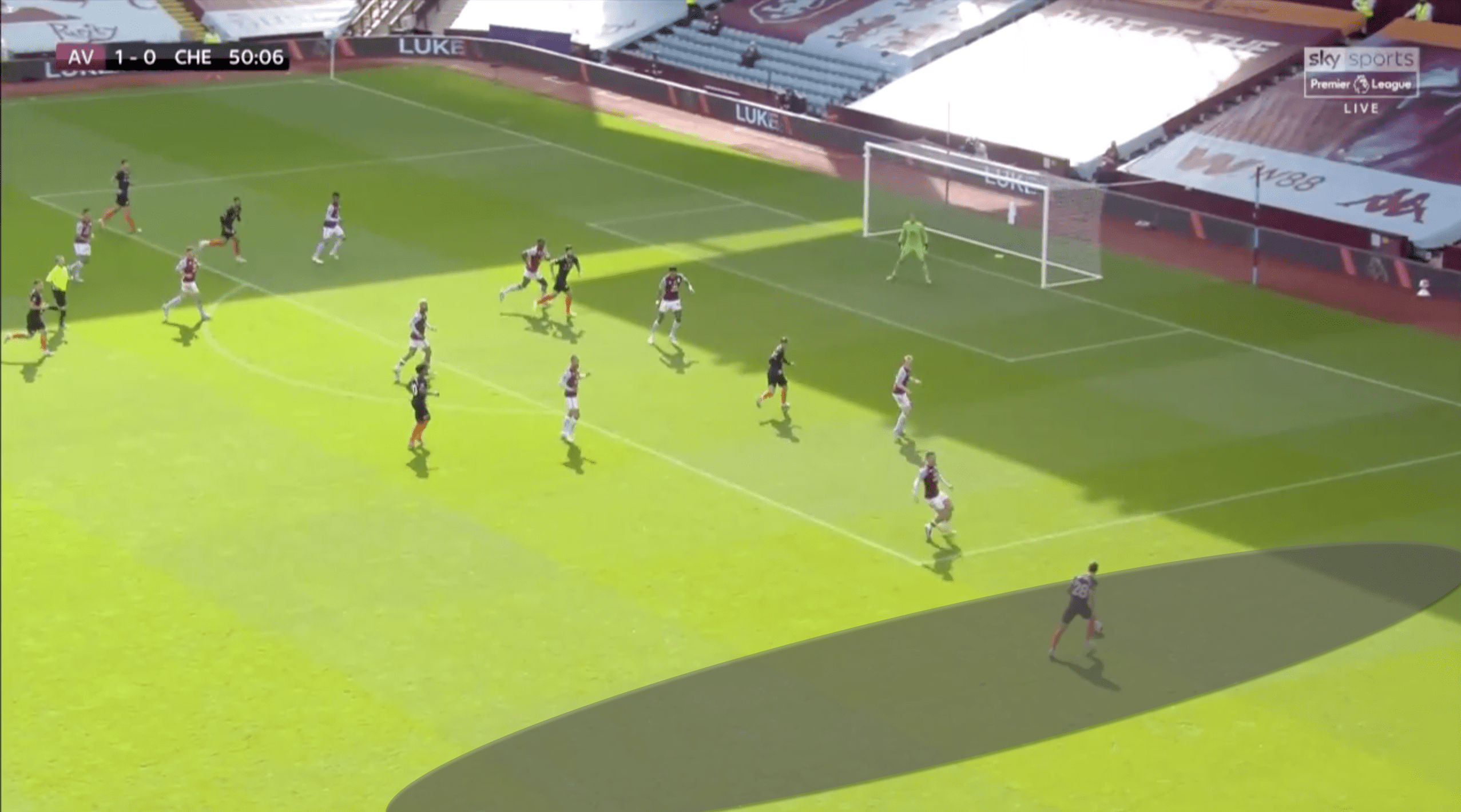
If we look at where Chelsea were more threatening from, it was the right side. Azpilicueta was crucial in ensuring that the ball would progress forward, and Chelsea would not be stuck in a rut like the first half. He was able to recognize that Villa, while defending well, were not particularly threatening going forward, and when they were, it was often because of Jack Grealish who was on the other side of the pitch. He could then move up the pitch more freely and essentially collapse the block that was working well for Villa in the first half.
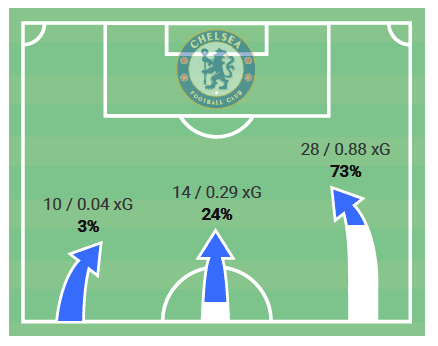
Squad Depth Advantage
The league has introduced a five substitute rule which allows team to make five subs rather than three in each match until the end of the season. Teams are also allowed to name nine substitutes on the bench instead of seven. The new rule was implemented in order to protect the players who have not played for three months in these strange circumstances. The reasoning does make sense, a lot of these players will struggle with fitness levels in these first few weeks, but it does favour clubs with larger squad depth and better players. Both managers used four substitutes, and it was Lampard’s that made the difference. Christian Pulišić came on, and changed the game, both with his goal, but in the way he constantly threatened Villa’s defence.
Pulišić came on for Loftus-Cheek, and while he is a good player, this was his first match in a while after recovering from a long-term injury, and he was playing in an unnatural position on the left-wing. Loftus-Cheek primarily plays as a central midfielder, and when Chelsea had possession in the final third, his first instinct, was to drop backwards, and central, in an attempt to find space to receive the ball.
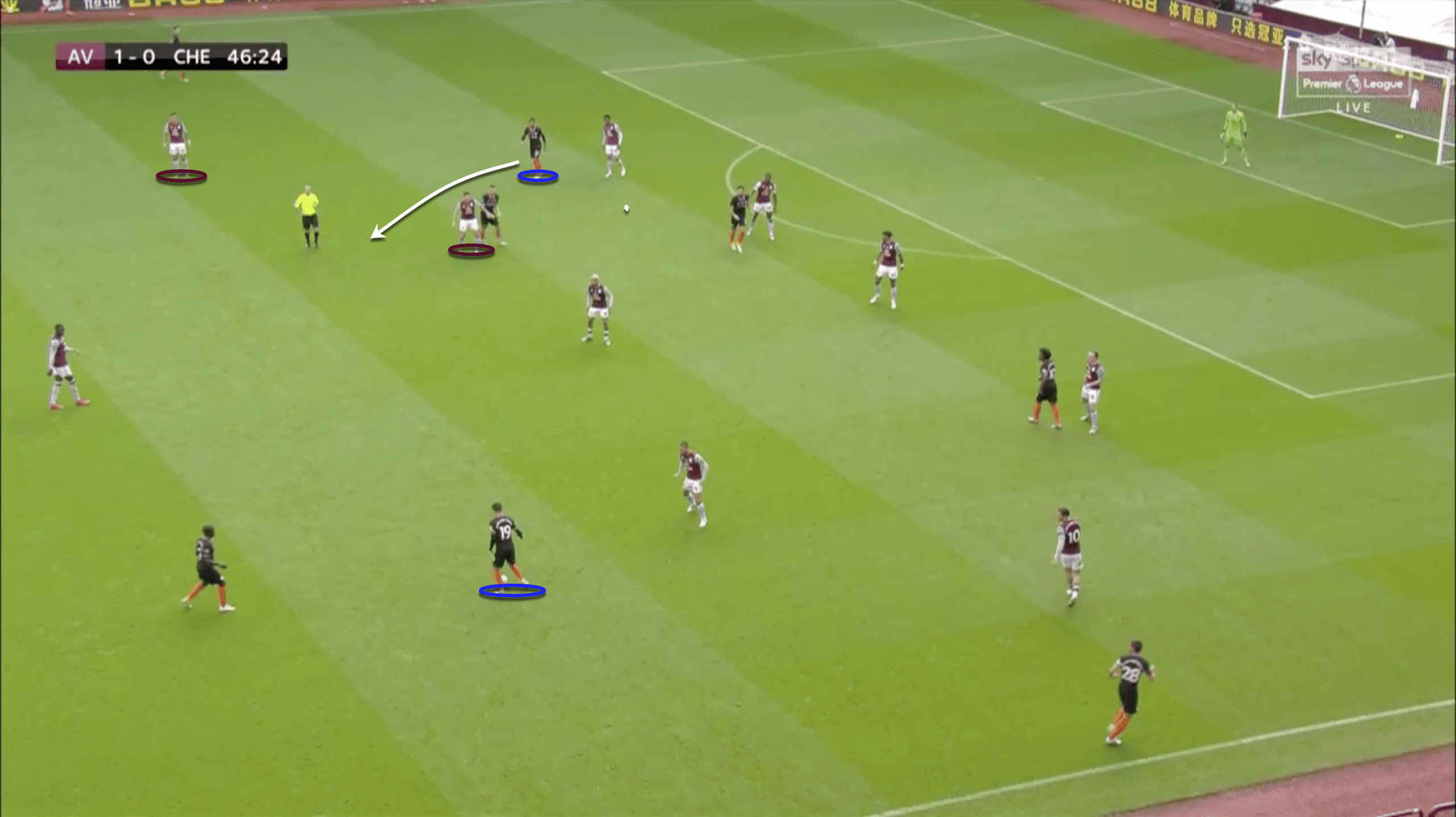
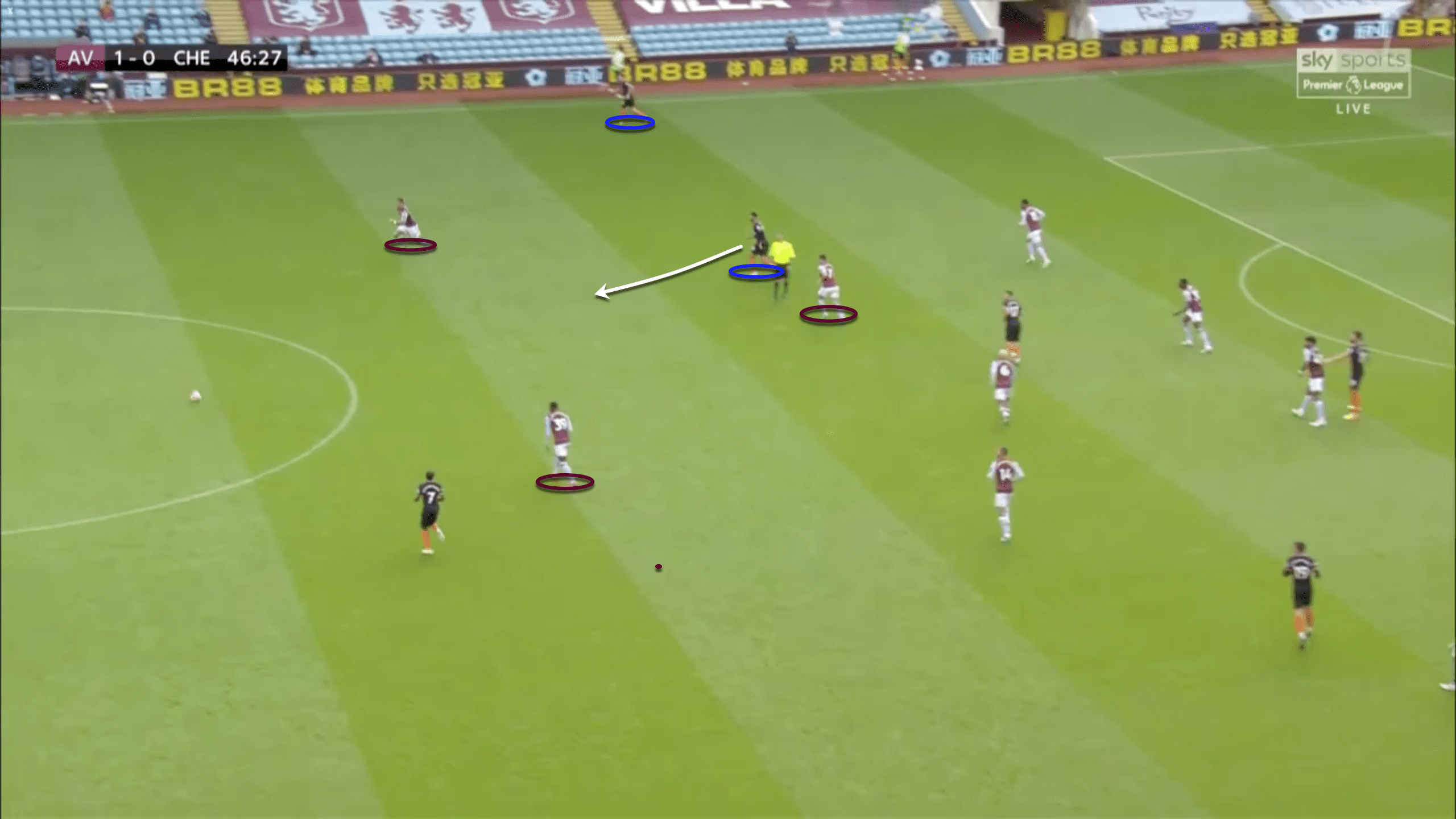
An out of position Loftus-Cheek was unable to do much in the game. Against a side like Villa, who was sitting deep, runs into the final third are much more beneficial. This is what Pulišić brought when he came off the bench. He came on and stayed high and wide, making runs into the box when needed.
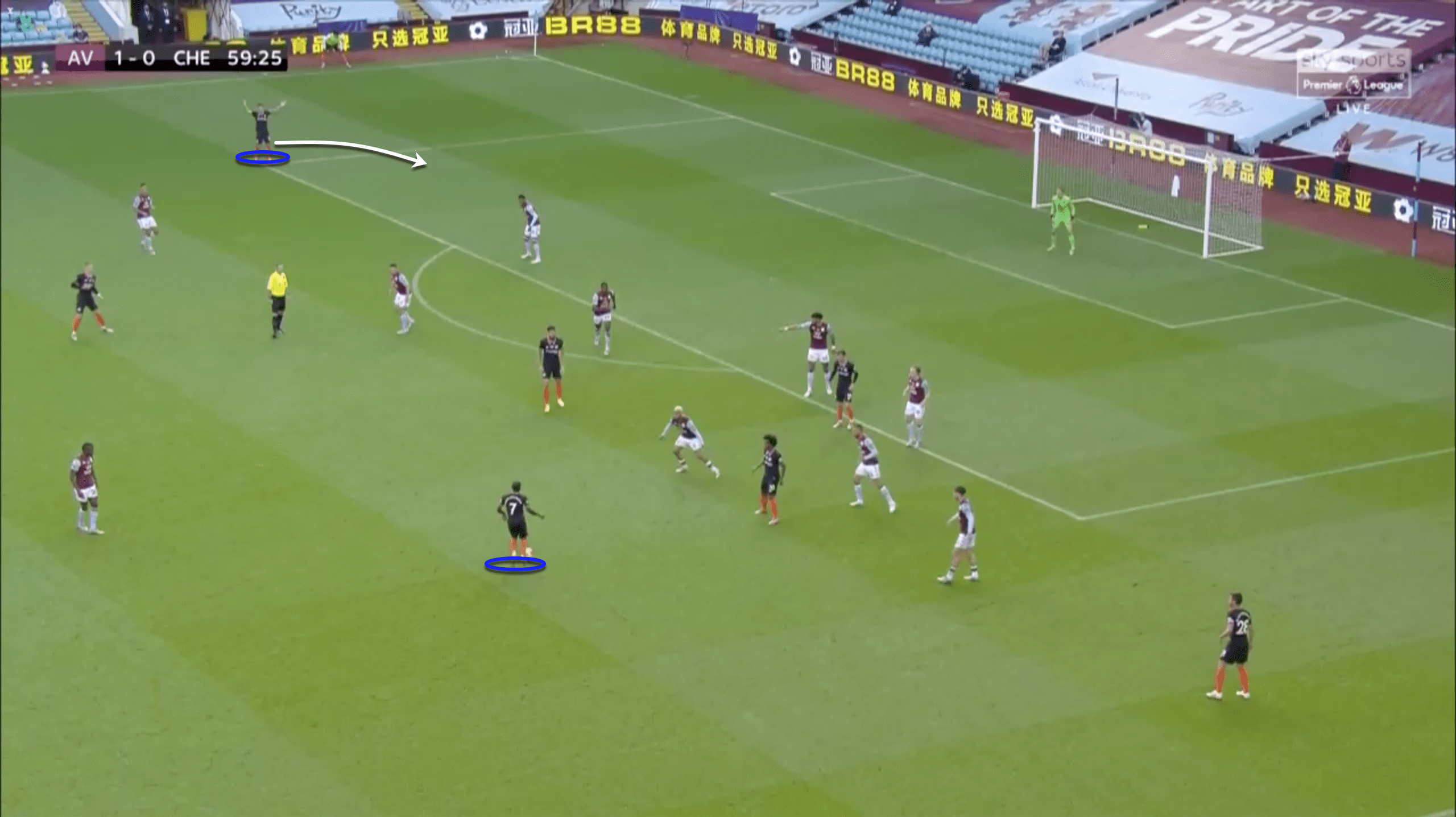
This move from Pulišić is what got Chelsea’s equalizer. And even better for Chelsea fans, this run into the far post that Pulišić constantly made is one of Hakim Ziyech’s favourite passes to pick. Such a simple tactical change was what changed the outcome of the match completely.
Final Thoughts
You always felt that Chelsea were going to get something out of the match, despite the analysis of Villa’s solid defensive display being strong in the first half. Aston Villa were poor going forward, and Chelsea had the better options, and the ability to change tactically in the middle of the match. With eight matches left, Chelsea should be able to secure a Champions League spot for next season. Their upcoming fixtures include Watford, Norwich, and West Ham, three teams that are either in poor form, or beatable for Chelsea, based on quality. Manchester City (their next match), Crystal Palace, Sheffield United, Liverpool, and Wolverhampton Wanderers (their final match of the season) are tougher upcoming fixtures, however, Chelsea do have the capability to pick up points in these five games, especially since Manchester City don’t have anything to play for and Liverpool will likely have the league wrapped up by then. The other three teams are fighting for European spots, even Palace, who despite being in ninth place currently, are two points away from a Europa League finish. While these teams are strong, and they will be a challenge, Chelsea do have the capabilities, and the squad, particularly with their personnel up front, to beat them.
Aston Villa, on the other hand, are still in the relegation zone, but unlike Norwich, they do still have a chance to stay up. Their most important match in these next eight fixtures will likely be their last match of the season, against West Ham who are also fighting relegation. They also play Arsenal who have several key men injured, and who are just in a disarray at the minute, and Everton, who travel away to Wolves three days before they face Villa. It will be an uphill battle for Villa, but there is a chance that they can accumulate enough points to just scrape by and avoid relegation, which is all they can ask for at this point.






Comments